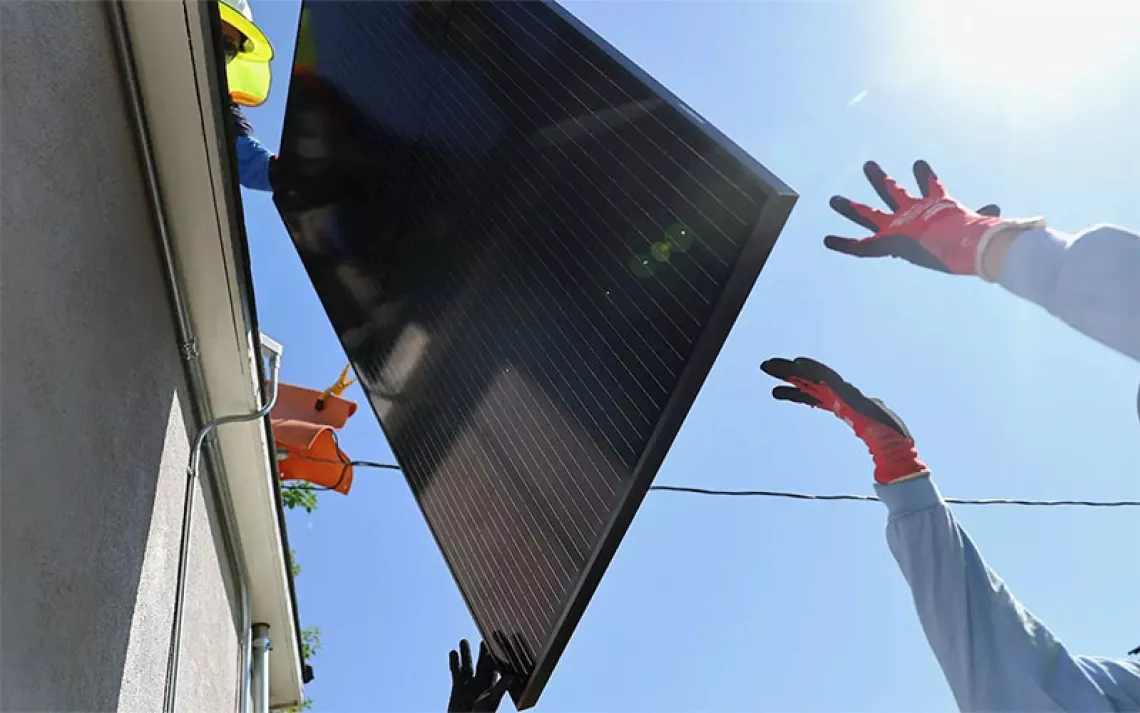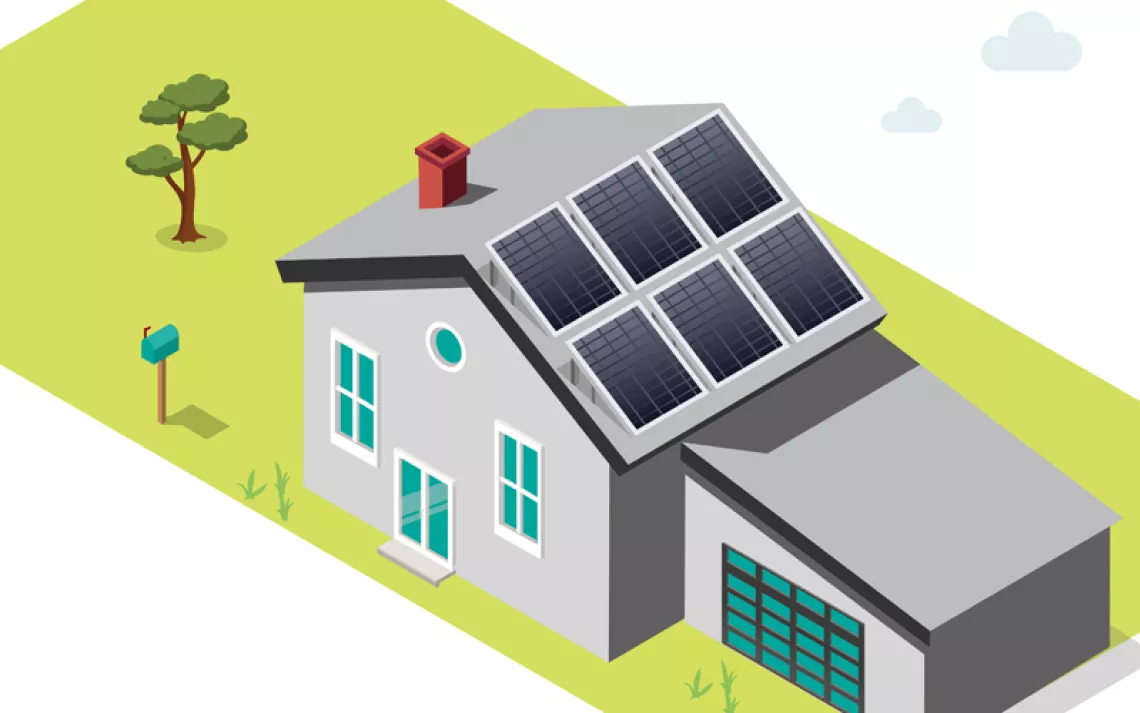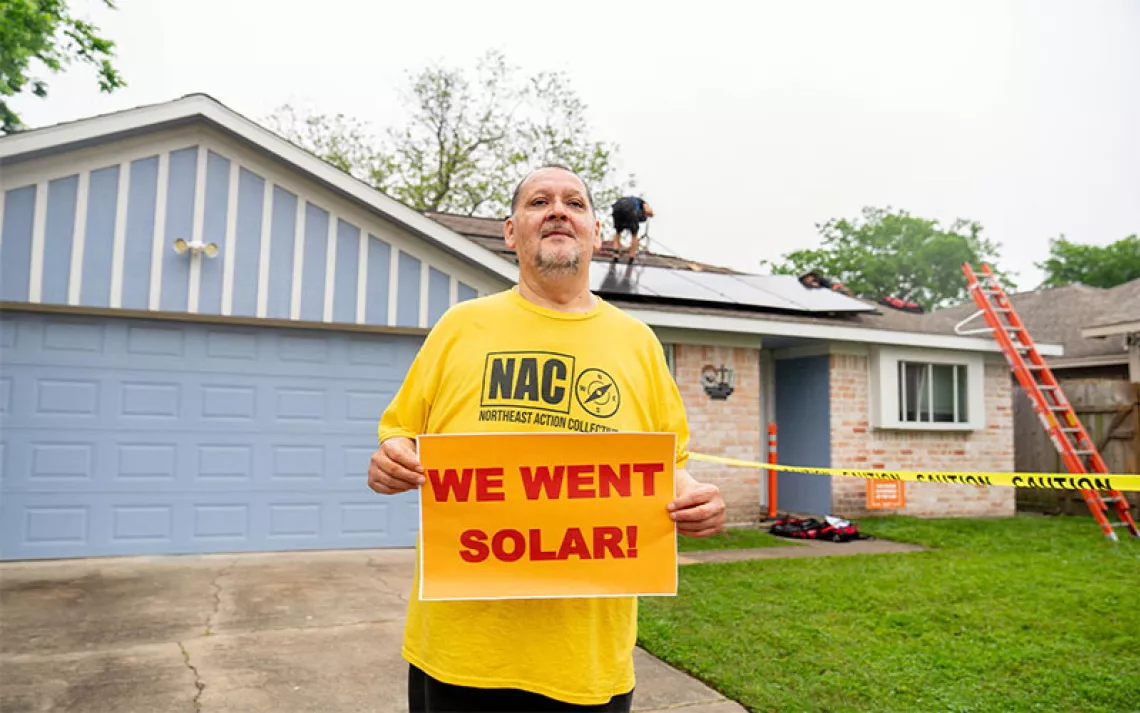Tribal Solar Brings Renewable Power to the People
Tim Willink helps indigenous communities power up on Native lands
Tim Willink, director of tribal programs for Grid Alternatives | Photo by Donovan Shortey
Adapted from an interview with Tim Willink by Kristine Wong.
I'm originally from a Navajo Nation community called Pueblo Pintado, in New Mexico. Because my parents were teachers in the 1970s, we had electricity at our house on the reservation. My grandparents didn't. They lived on an isolated part of the Navajo Nation, and when I visited them, I went to bed earlier, and it was a lot more quiet. We would hike in the canyons and herd sheep, or chop wood or ride horses. There were big electricity lines going through the reservation from coal-fired power plants, but they bypassed the houses. I didn't think much of it because my grandparents always had kerosene lanterns.
But in college, I started taking courses in economics and Native American issues, and I became more aware. After graduating, I worked for the Navajo Nation in Washington, D.C., and saw the power of public policy. I was interested in renewable energy, solar in particular, and about 10 years ago I decided to change careers and become a solar installer in Denver. It was a lot of grunt construction work, but I really enjoyed it, being outside and working with my hands. We'd put solar on medical centers and businesses and schools. I'd go home to the Navajo Nation on a regular basis, where the sun makes you squint because it is so powerful and there's a huge sky with wide-open spaces. There's a ton of solar potential. I'd wonder, "Why can't we do this here?"
Now I lead the National Tribal Solar Program at Grid Alternatives, an organization that partners with Native American tribes throughout the United States. Grid has completed more than 500 residential solar installations with tribes, for a total energy capacity of over two megawatts. The Bishop Paiute Tribe in California is just one example; we've brought solar PV to a vast majority of homes on the reservation. The Mesa Grande Tribe in Southern California formed a solar company called Tekamuk Energy, and it's installing with Grid now. The Spokane Tribe formed an enterprise called Sovereign Power, and it's looking at becoming a solar-installation business. Later this year, we'll be doing projects in the eastern part of the Navajo Nation and five more with the Rosebud Sioux Tribe in South Dakota.
Refrigeration and lighting make the most difference to Native Americans who don't have electricity and then get solar. They can refrigerate their medicines and charge their phones, which increases safety for elderly folks. We did an install in the Utah portion of the Navajo Nation for a respected elder who did have electricity. We installed an eight-panel solar system, and she didn't have to pay an electricity bill the first year, thanks to net metering. The solar installation offset her existing energy costs, saving her money.
The potential for distributed generation in solar is what excites me. According to the National Renewable Energy Laboratory, tribes currently have 2 percent of the land in the United States, and those lands represent 5 percent of the renewable energy potential in the country. The rapid increase in the U.S. solar industry over the last eight to 10 years has largely bypassed Native American tribes. One of the main reasons is the investment tax credit. A lot of tribes don't have access to it because tribes don't pay federal taxes, since they are sovereign nations.
Workforce development is a big component of Grid's outreach program. We have provided opportunities for 400 volunteers. They range from people who want hands-on training in solar installation to tribal housing-authority employees looking to study system maintenance to tribal college students in construction-education programs.
We're developing different career paths for workers in the solar industry and training Native Americans to bring solar power back to their communities. We are in the second year of a three-year AmeriCorps grant that is funding a program within SolarCorps for Native Americans. Participants get hands-on training in solar PV, and the projects are on tribal lands. We have three participants enrolled this year and had three graduates last year, all in their 20s. Two of them have gone on to become permanent Grid employees and are leading our construction teams. That gets me excited about the potential for the future.
This article appeared in the July/August 2017 edition with the headline "Sovereign Power."
 The Magazine of The Sierra Club
The Magazine of The Sierra Club



